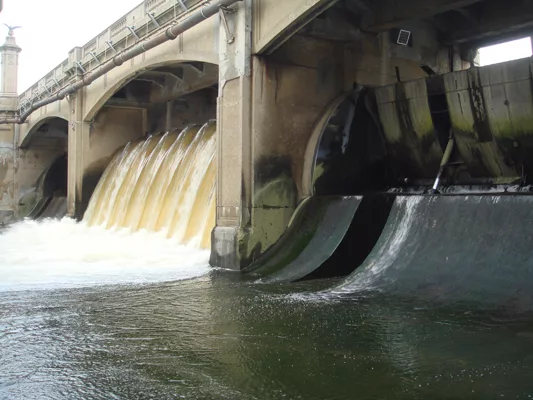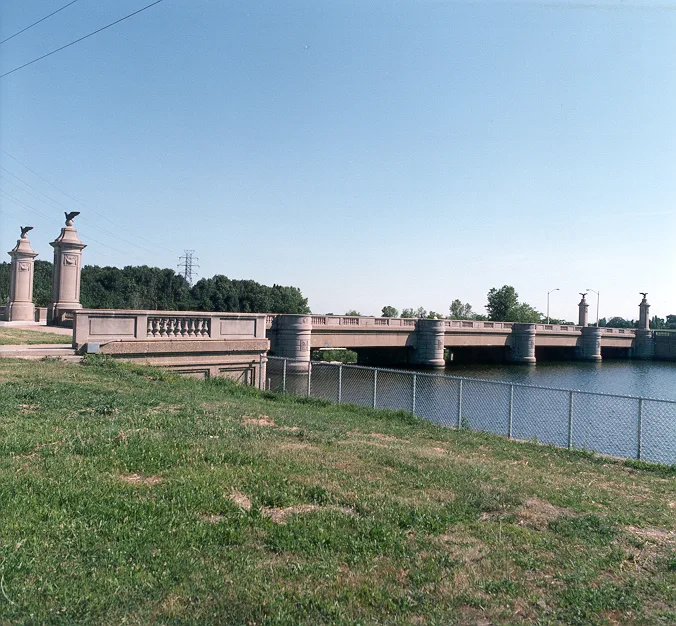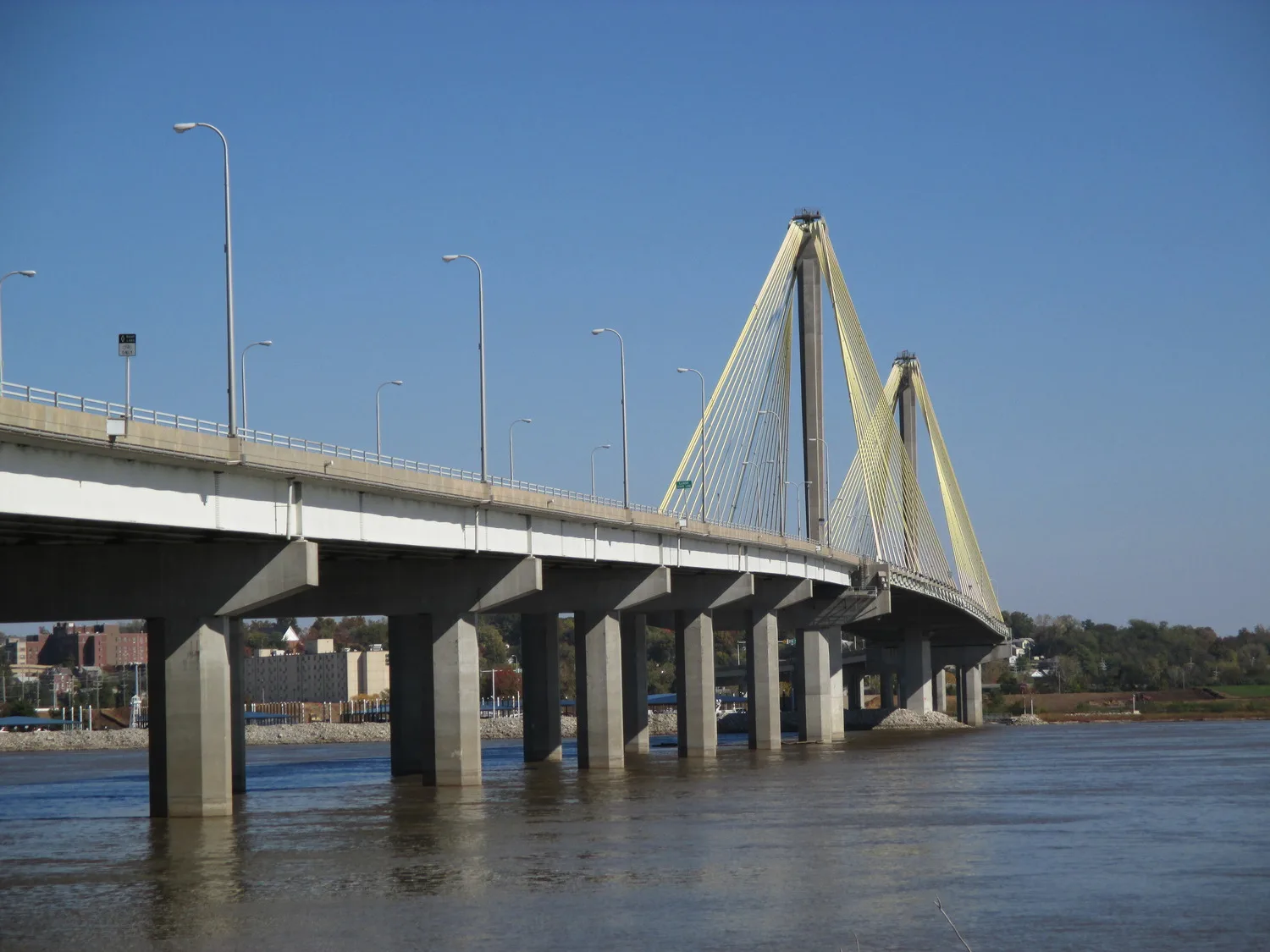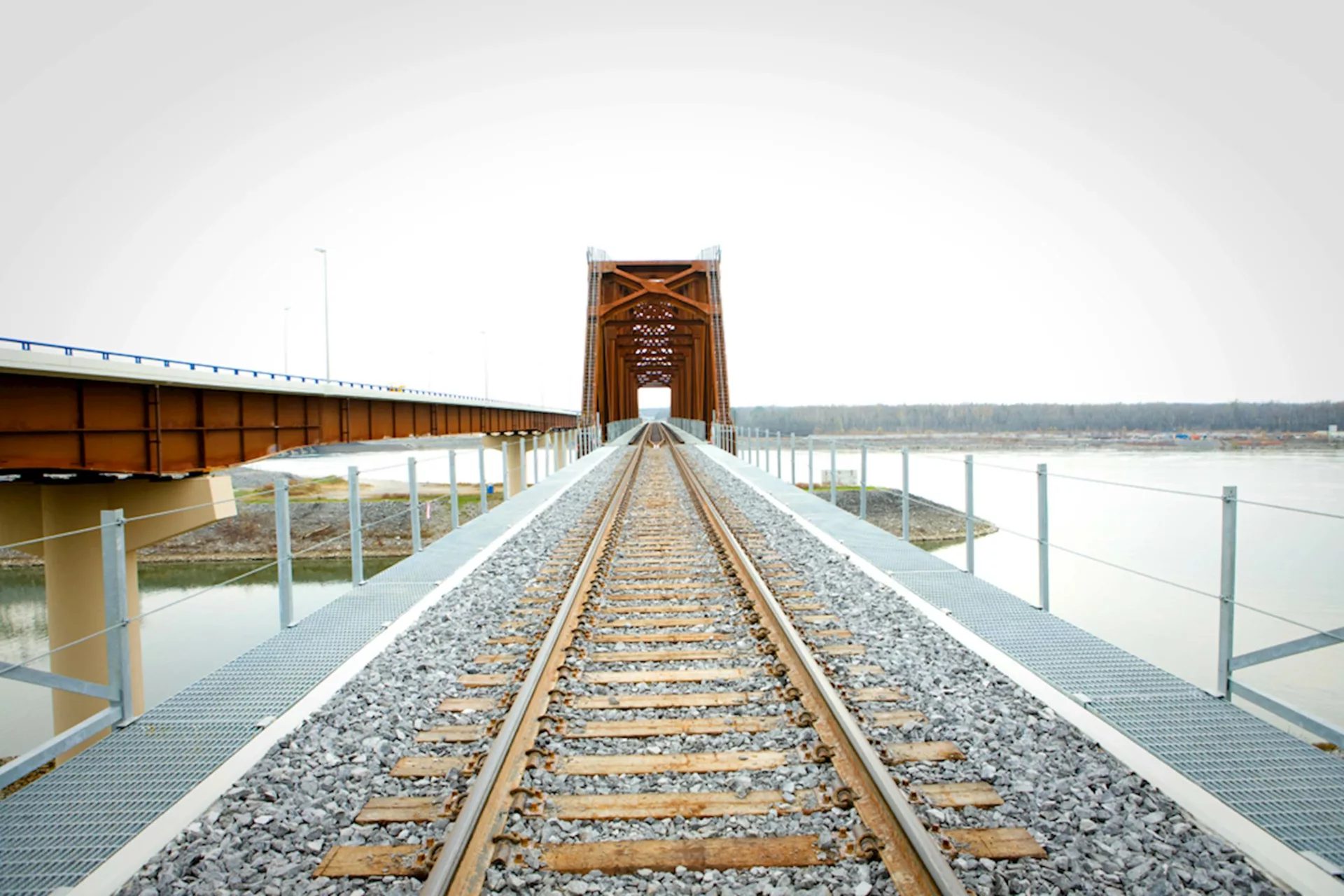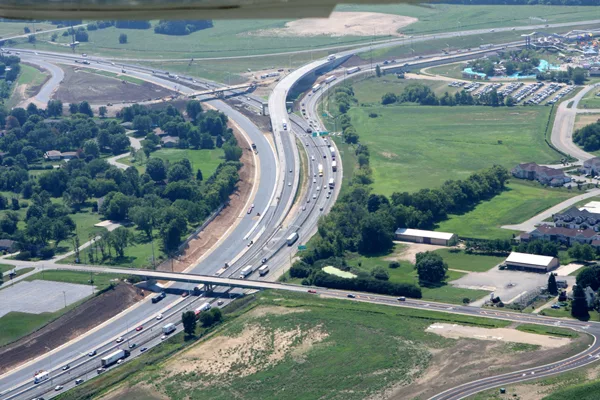Located in Illinois’ capital city of Springfield, the gated spillway at Spaulding Dam is a modern-day example of engineering ingenuity, historic preservation and sustainable design.
Constructed around 1932 on Sugar Creek, the 1,600-foot earth dam created the Lake Springfield reservoir. The lake has a 4,200-acre normal pool and a 5,800-acre maximum pool at the top of the dam. At maximum pool, the spillway has a discharge capacity of more than 65,000 cubic feet per second. The dam featured a concrete and brick cutoff wall and a gated spillway with five floating steel-drum gates. The reservoir was designed to provide drinking water for city residents and supply water to cool City Water, Light & Power’s (CWLP) power-generation plant. The gated spillway controlled the lake’s water levels.
Strengthening Spaulding Dam for the future
After more than 70 years of continuous operation, CWLP, the dam’s owner, determined that it was in need of rehabilitation. Its gates — original to Spaulding Dam — were nearing the end of their service life. After careful monitoring, CWLP also discovered that high tailwater conditions sometimes interfered with the gates being able to lower fully — reducing the spillway’s discharge capacity. In 2005, CWLP selected Hanson to evaluate the rehabilitation and replacement alternatives for the gates. Bergmann Associates, a design firm with headquarters in Rochester, N.Y., assisted Hanson with gate selection, construction plan and shop drawing reviews and site visits.
The five gates were each 45 feet long and located between substructure elements of a historic concrete bridge. The gates operated under a vertical range of 0 feet to 8 feet. Each original gate consisted of a steel “pie-shaped” drum that was completely enclosed with steel-skin plates. One issue affecting the dam involved gate control. Each gate was individually and manually controlled by raising or lowering the water level in the chamber beneath each gate. This process involved manual operations by CWLP employees, a time-consuming and inefficient option. In addition, the gates were leaking around the hinge and end seals — creating maintenance and sealing challenges. CWLP and Hanson had to address the fact that rehabilitating Spaulding Dam involved retrofitting an historic structure while maintaining its integrity and continuous operation. A historic bridge crosses over the gated spillway section, and a major roadway bridge crosses the downstream spillway slab.
Other stakeholders played integral roles during the evaluation, design and rehabilitation of Spaulding Dam’s gated spillway. Some of the stakeholders included the Illinois Department of Natural Resources (IDNR), the Illinois Environmental Protection Agency (IEPA), the Illinois Historic Preservation Agency (IHPA) and the U.S. Army Corps of Engineers (USACE). This project required
extensive coordination and cooperation from the various agencies and team members.
“We choose to work with Hanson because of the level of expertise in the field of study of a particular project.” — Todd LaFountain, CWLP
To meet the IDNR’s Office of Water Resources’ regulatory criteria, Hanson helped CWLP update its Emergency Action Plan (EAP) to comply with current State and Federal Emergency Management Agency (FEMA) guidelines. The EAP required new inundation mapping that Hanson developed based on hydrologic modeling of more than 5,000 square miles of watershed area. Hanson’s water resources engineers studied the impact Spaulding Dam could have on Springfield and downstream communities in the event of a probable maximum flood. Conducting one of the largest breach analyses in Illinois, Hanson developed a watershed model that included more than 480 cross-sections spanning 150 river miles.
A hinge-crest gate with hydraulic operators
After evaluating seven potential gate types for Spaulding Dam, Hanson presented the options to CWLP. The city selected Hanson’s recommended option, hinged-crest gate with hydraulic operators below. The advantages of this type of gate include:
• a reliable gate designed and fabricated by a commercial gate manufacturer
• s similar structural load path as the dam’s original gates
• hydraulic cylinders and computerized controls
• maintenance facilitated via access to the cylinders from the spillway
The new gate system also had to meet the following criteria:
• hydraulic rating efficiency
• water discharge characteristics matching the existing condition
• precise water elevation control
• structural reliability
• redundancy to prevent loss of pool
• remote operation from CWLP’s water purification plant
• use of modern construction techniques and technology
• cost and constructability
History meets sustainability
The design also had to limit the visual changes to Spaulding Dam — keeping the look of the bridge and spillway similar to its original design, especially as it appears on the lakeside, which is visible to lake-area residents and recreational users of the lake and parks. The project team worked closely with the IHPA to achieve this goal. Other considerations included limiting concrete demolition; replacing one gate section at a time to allow uninterrupted use of the spillway; and incorporating redundancies for the hydraulic power unit, electrical power and PLC controls.
Additional safeguards included the ability to operate each gate with a single cylinder and to restrain the gate with dogging devices that pin the gate leaves in their fully raised position. Hanson’s project team used performance specifications to convey the loadings and reliability expectations for the new gates at Spaulding Dam. These specifications highlighted the engineering, design, manufacture, fabrication, quality control, shop assembly, testing, delivery and installation of the replacement hydraulically operated hinged-crest spillway gates.
Hanson used GIS to model and map areas around Spaulding Dam and update CWLP’s EAP, identifying buildings, neighborhoods and communities that might be affected during a dam failure.
The project team achieved a sustainable design by reusing some elements from the original structure to update and improve the operations at Spaulding Dam. Working in cooperation with the client and various permitting agencies, the project team kept the historic elements of Spaulding Dam intact while constructing a new gate system using modern design and construction techniques. The design’s reliability ultimately has been proven in the day-to-day operations of the rehabilitated spillway at the dam. This project updated an aging structure while maintaining its historic integrity and uninterrupted operation.
